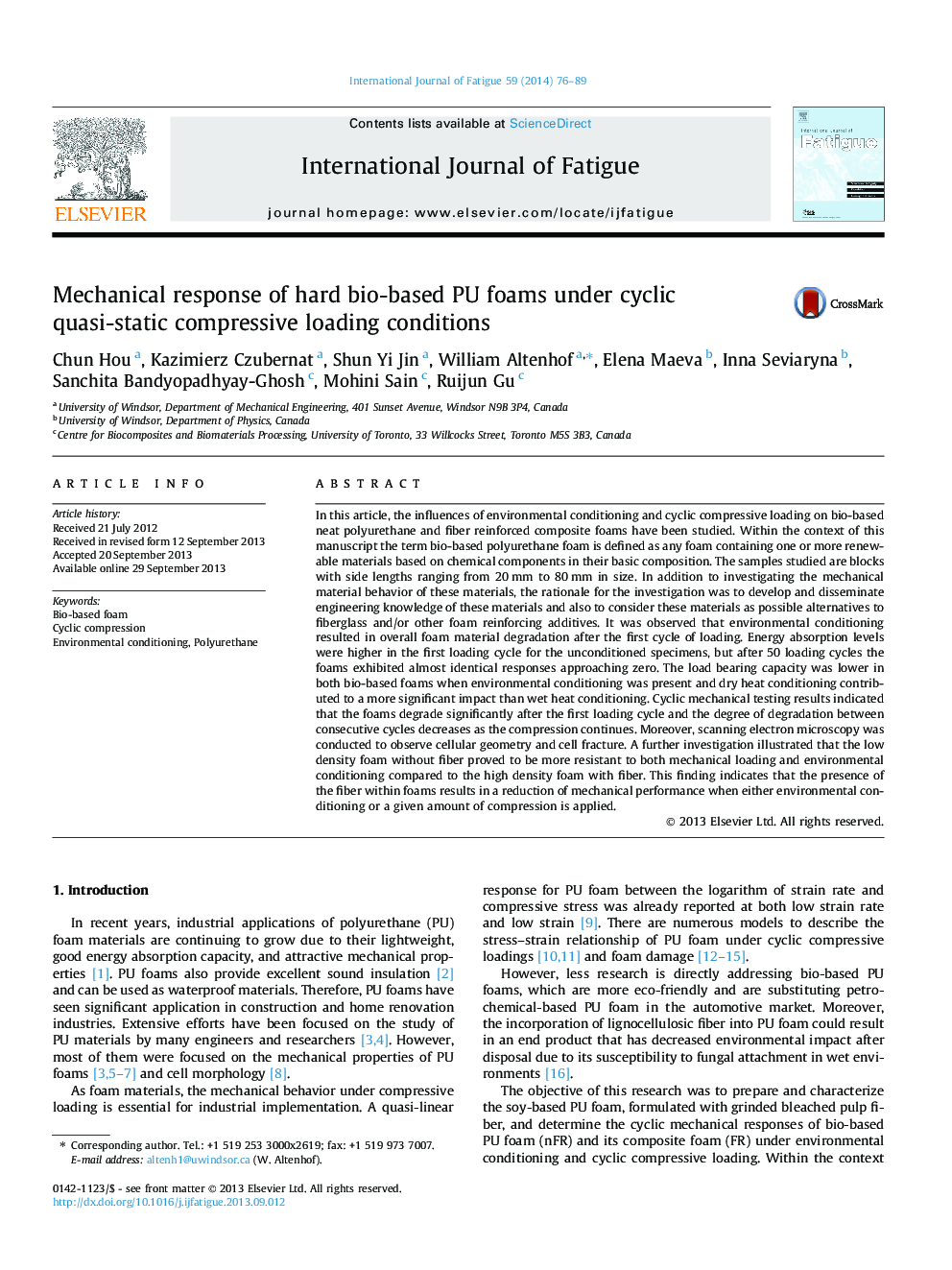| Article ID | Journal | Published Year | Pages | File Type |
|---|---|---|---|---|
| 7172392 | International Journal of Fatigue | 2014 | 14 Pages |
Abstract
In this article, the influences of environmental conditioning and cyclic compressive loading on bio-based neat polyurethane and fiber reinforced composite foams have been studied. Within the context of this manuscript the term bio-based polyurethane foam is defined as any foam containing one or more renewable materials based on chemical components in their basic composition. The samples studied are blocks with side lengths ranging from 20Â mm to 80Â mm in size. In addition to investigating the mechanical material behavior of these materials, the rationale for the investigation was to develop and disseminate engineering knowledge of these materials and also to consider these materials as possible alternatives to fiberglass and/or other foam reinforcing additives. It was observed that environmental conditioning resulted in overall foam material degradation after the first cycle of loading. Energy absorption levels were higher in the first loading cycle for the unconditioned specimens, but after 50 loading cycles the foams exhibited almost identical responses approaching zero. The load bearing capacity was lower in both bio-based foams when environmental conditioning was present and dry heat conditioning contributed to a more significant impact than wet heat conditioning. Cyclic mechanical testing results indicated that the foams degrade significantly after the first loading cycle and the degree of degradation between consecutive cycles decreases as the compression continues. Moreover, scanning electron microscopy was conducted to observe cellular geometry and cell fracture. A further investigation illustrated that the low density foam without fiber proved to be more resistant to both mechanical loading and environmental conditioning compared to the high density foam with fiber. This finding indicates that the presence of the fiber within foams results in a reduction of mechanical performance when either environmental conditioning or a given amount of compression is applied.
Related Topics
Physical Sciences and Engineering
Engineering
Mechanical Engineering
Authors
Chun Hou, Kazimierz Czubernat, Shun Yi Jin, William Altenhof, Elena Maeva, Inna Seviaryna, Sanchita Bandyopadhyay-Ghosh, Mohini Sain, Ruijun Gu,
